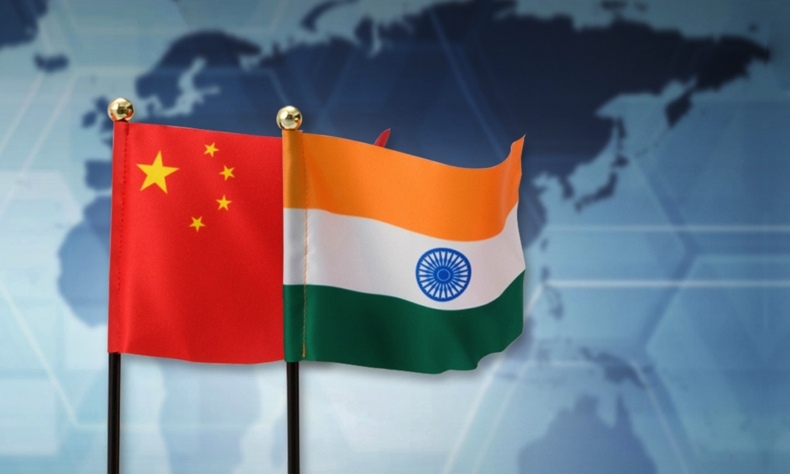Promote a Balanced China-India Economic Ties

In the future, the Indian government needs to strictly implement the India-China Bilateral Investment Treaty, take practical measures to safeguard the legitimate rights and interests of Chinese enterprises investing in India, and provide a safe, fair and predictable business environment for foreign enterprises, including those from China.
In October 2020, the Fifth Plenary Session of the 19th Central Committee of the Communist Party of China (CPC) adopted the CPC Central Committee’s proposals for the formulation of the 14th Five-Year Plan (2021- 2025) for National Economic and Social Development and the Long-Range Objectives Through the Year 2035. Xi Jinping, general secretary of the CPC Central Committee, has personally led the formulation of the CPC Central Committee’s proposals for the 14th Five-Year Plan (FYP). The document guides the start of China’s new journey of building a modern socialist country in an all-round way and its march towards the second centenary goal, and directs the country’s social and economic development for the next five years and beyond.
What is particularly noteworthy is that the 14th FYP proposes to build open economy at a higher level and open up a new situation of win-win cooperation, emphasizing the implementation of opening up in a wider scope, in a broader field and at a deeper level, and relying on China’s large market advantages to promote international cooperation and achieve mutual benefit and win-win results. This not only relates to the future well-being of the 1.4 billion Chinese people, but also will bring more “China opportunities” to the development of the world, especially to provide new impetus and opportunities for the development of China-India relations.
Entering the 21st century, economic and trade exchanges between China and India have continued to rise, and bilateral trade volume reached US$100 billion. Yet long-term trade imbalance between China and India cannot be ignored. In 2019, the trade volume between China and India reached US$92.81 billion, of which China’s exports to India reached US$74.83 billion, while China’s imports from India amounted to only US$17.98 billion. China’s trade surplus with India reached US$56.85 billion.
This is mainly due to the fact that the two countries are at different stages of economic development and their industrial structures are highly complementary. India mainly exports agricultural products, raw materials and primary products, such as pearls, gemstones and metals, metal ores, cotton, yarn, etc. China exports manufactured goods such as motors and equipment, computers, servers, printers, machinery and parts, organic chemicals, etc. The value of primary products exported by India to China is far less than that of manufactured products exported by China to India.
Yet India believes that most of its agricultural products and competitive industries (such as pharmaceuticals, IT, etc.) are facing obstacles accessing China’s market. The Indian authorities have repeatedly mentioned this issue during high-level leaders’ meetings, ministerial visits, strategic economic dialogues and other exchanges, requesting that China expand market access for India’s IT sector, medicine, crops and other products, and adjust regulatory procedures.
The 14th FYP aims at enhancing the level of opening up, promoting trade and investment liberalization and facilitation, and strengthening the comprehensive competitiveness of foreign trade. The country will improve the “pre-establishment national treatment plus a negative list” management system for foreign investment, expand the opening up of the service sector and protect foreign companies’ legitimate rights and interests. This obviously provides greater convenience for India to increase its exports to China, including service sector offerings such as in the IT industry, and for more Indian enterprises to invest in China.
In addition, the 14th FYP proposes to further improve the laws, policies and service systems for promoting and protecting overseas investment, firmly safeguard the legitimate rights and interests of Chinese enterprises overseas and realize high-quality imports and high-level exports.
Since 2020, the Indian authorities have adopted discriminatory policies toward Chinese enterprises by unilateral cancellation of contracts, setting up trade barriers, imposing restrictions on investment by Chinese enterprises and bidding for Indian government-initiated projects, and banning apps such as TikTok. This is obviously against the rules of international trade and investment and seriously affects the confidence of international capital, including Chinese capital, in India.
In the future, the Indian government needs to strictly implement the India-China Bilateral Investment Treaty, take practical measures to safeguard the legitimate rights and interests of Chinese enterprises investing in India, and provide a safe, fair and predictable business environment for foreign enterprises, including those from China. Only in this way can we strengthen the confidence of Chinese enterprises to invest in India and further promote the balanced and sustainable development of China-India economic and trade relations.
 Facebook
Facebook
 Twitter
Twitter
 Linkedin
Linkedin
 Google +
Google +










